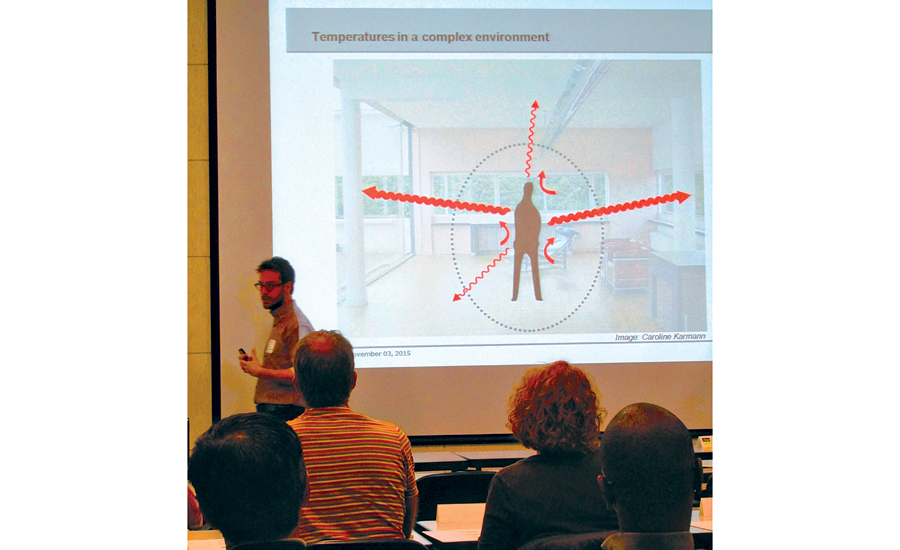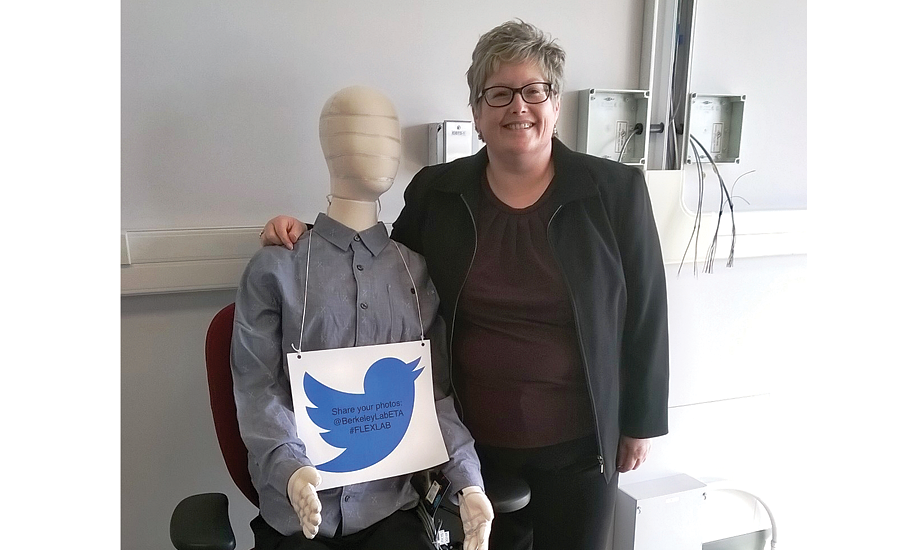Last November, I was invited by Viega to attend its radiant seminar in San Francisco and to tour the offices of the Center for the Built Environment. Viega and CBE announced their partnership in February 2015 to offer education on commercial integrated hydronic systems.
CBE, housed on the campus of the University of California Berkeley, researches holistic building methods, such as radiant heating and cooling. Fred Bauman, P.E., is the lead researcher on a project on advanced integrated systems with a focus on radiant cooling, also known as thermally activated building systems.
The class I attended was presented by Bauman and his CBE colleagues Paul Raftery and Stefano Schiavon, as well as Jason McKinnon, Viega’s director of training. The focus was on comparing radiant cooling systems to forced-air systems in commercial buildings, emphasizing energy and comfort performance.
CBE’s research into the two systems included an occupant survey of thermal comfort in buildings with conventional HVAC cooling systems since 2004 (the benchmark) and buildings outfitted with radiant systems in the same time period. Results indicated that both systems provided thermal comfort, Schiavon notes, depending on operation and control of the systems.
Research into energy performance was more definitive. Four types of systems were examined in four California buildings: a conventional air system; radiant with chiller; radiant with cooling tower; and radiant with ground-source heat pump. Comparing the coefficient of performance for each system’s refrigerant cycle, the radiant/cooling tower system would provide free cooling, with power needed only for water pumps and cooling tower fans.
The radiant/geothermal heat pump system had a COP of 57.4; the radiant/chiller system saw a 14.4 COP and the traditional air system had an 8.6 COP. The conclusion, Raftery says, is that thermal storage in slabs can reduce peak cooling loads and improve chiller efficiency.
The following day I toured CBE with Tim Allbritten, Viega’s marketing manager, and Matt Sonnhalter, who heads up business-to-trade marketing firm Sonnhalter. We met with Bauman, Raftery, Schiavon and Caroline Karmann, a graduate student researcher. CBE is researching construction methods that make buildings more environmentally friendly, more productive to work in and more economical to operate. It also develops better tools to measure occupant feedback regarding their indoor environment and linking that to indoor enviromental quality.
Many things affect the comfort factor when working or interacting in a nonresidential building, such as clothing, floor coverings and the number of people and objects in a room. And there is always that struggle for control of the office thermostat. But instead of heating or cooling the air in the room, what if you changed the temperature of the air and objects around people? That’s the basic premise behind radiant heating and cooling — changing the temperature of floors and walls in the space closest to where people are to make them more comfortable.
In its advanced personal comfort research, CBE developed a battery-powered chair where people can adjust the temperature of it to warm them up when a room is too cold or cool them down when it’s too humid. It has low-energy fans, a reflective exterior, small heating elements and an occupancy sensor to save power when not in use. Using the low-powered chair to control a person’s immediate thermal environment allows them to stay comfortable over a wider range of ambient temperatures.
At the Lawrence Berkeley National Laboratory’s FLEXLAB, which was the next stop on our tour, CBE’s thermal “manikin” is used by researchers as they simulate different temperature scenarios and how they affect a person in a room. FLEXLAB is a system of “test beds” that examine energy-efficient technologies in integrated systems under real-world conditions, including rotating beds to test sun exposure at different times of the day.
It seems that if radiant and hydronic contractors want to provide real comfort to their customers, they are going to need to be versed in various technologies that work together to provide the optimal environment customers are looking for, whether it’s a commercial space or someone’s home.
It’s in your best interest to take advantage of the training provided by industry manufacturers to learn about the technological advances taking place in the industry and be the comfort expert in your community.




